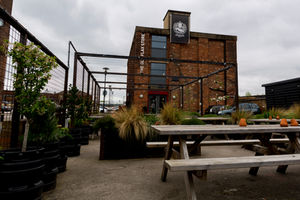The Importance of Healthy, Nutritious Foods in a Nursing Home
- Karis Hermann
- Apr 13, 2018
- 2 min read
Care homes are places to house the elderly, disabled and people with many other conditions. However, many people talk about the types of food they are served. Many people believe care homes serve the same as hospitals, and that the food isn’t very appealing. This is not always the case.

Louisa Hermann, General manager at Knowles Court care home speaks about the importance of healthy, nutritious meals for residents of her nursing home.
“Making sure the residents in the care home have nutritious food and drink is essential to good care. Food is fundamental to a person’s quality of life and can be critical to their health and well-being. It is known that people’s appetites also reduce with age. Therefore, keeping older people interested in food can be a challenge. Residents are offered a daily menu that reflects their preferences. Meals are nutritionally balanced for dietary needs, and there are also food choices and preferences for people of ethnic and cultural backgrounds.”
“In addition to meals, it is important to offer and make available snacks, juices, and water to maintain a balanced, dietary intake.”
Louisa puts the residents of her care home first, looking over all their meal times and checking on the kitchen staff to see what meals are being prepared for the day.
In many care homes, the elderly can have additional, complex needs. At Knowles court, of one these conditions are dysphagia (swallowing difficulties). A person with this condition will still require a balanced diet. However, the cook will provide foods of different textures so that the food is safe to eat for the residents who are at risk of choking. Irene, a cook at Knowles court mentions that “most foods can be modified for the individual’s needs.”

Residents at Knowles Court who suffer from dementia don’t need a specialised diet. However, due to their condition, the resident may not always remember to eat. Dementia residents do not always get enough exercise. The lack of physical activity can reduce a person’s appetite. Therefore, Knowles Court makes changes to meal times. Through education of staff, the aim of this care home is to make meals times more effective. They do this by introducing ‘protective meal times’ where there are limited distractions (no tv, no encouragement of visitors, doors closed). This enables meal times to have a nice ambiance. Doing this also helps the residents to socialise with one another.
At Knowles Court, the staff must always remember presentation. Visually, this is highly important to the person eating, many people are known to eat with their eyes, meaning they will judge a meal first by how it looks rather than how it tastes.

Meals must always be presented hot, they must also look attractive and appealing as the food is more likely to be eaten. This is the same way a person would expect a meal to be presented in a restaurant, it should be no different for a resident of a care home.











Comments